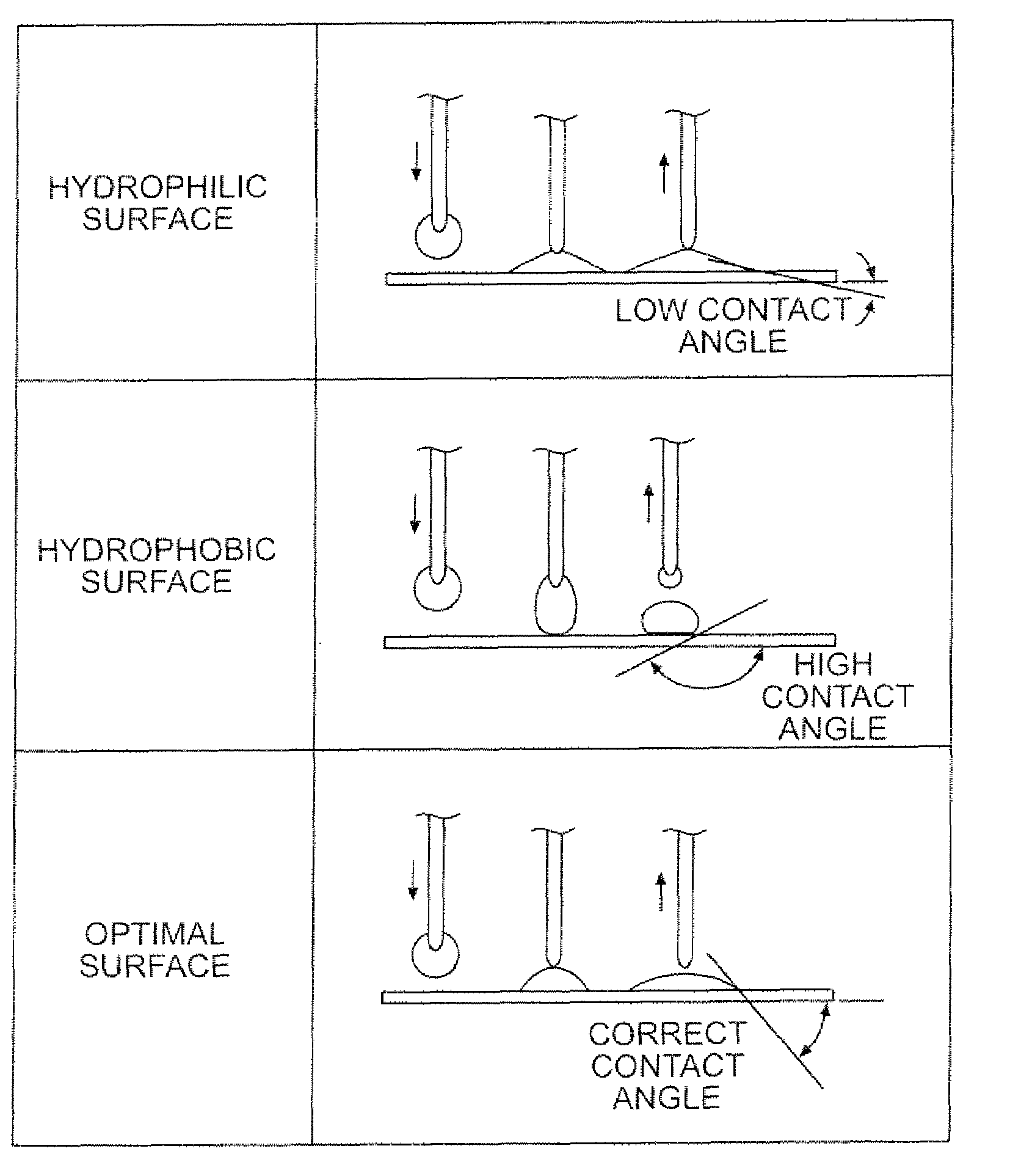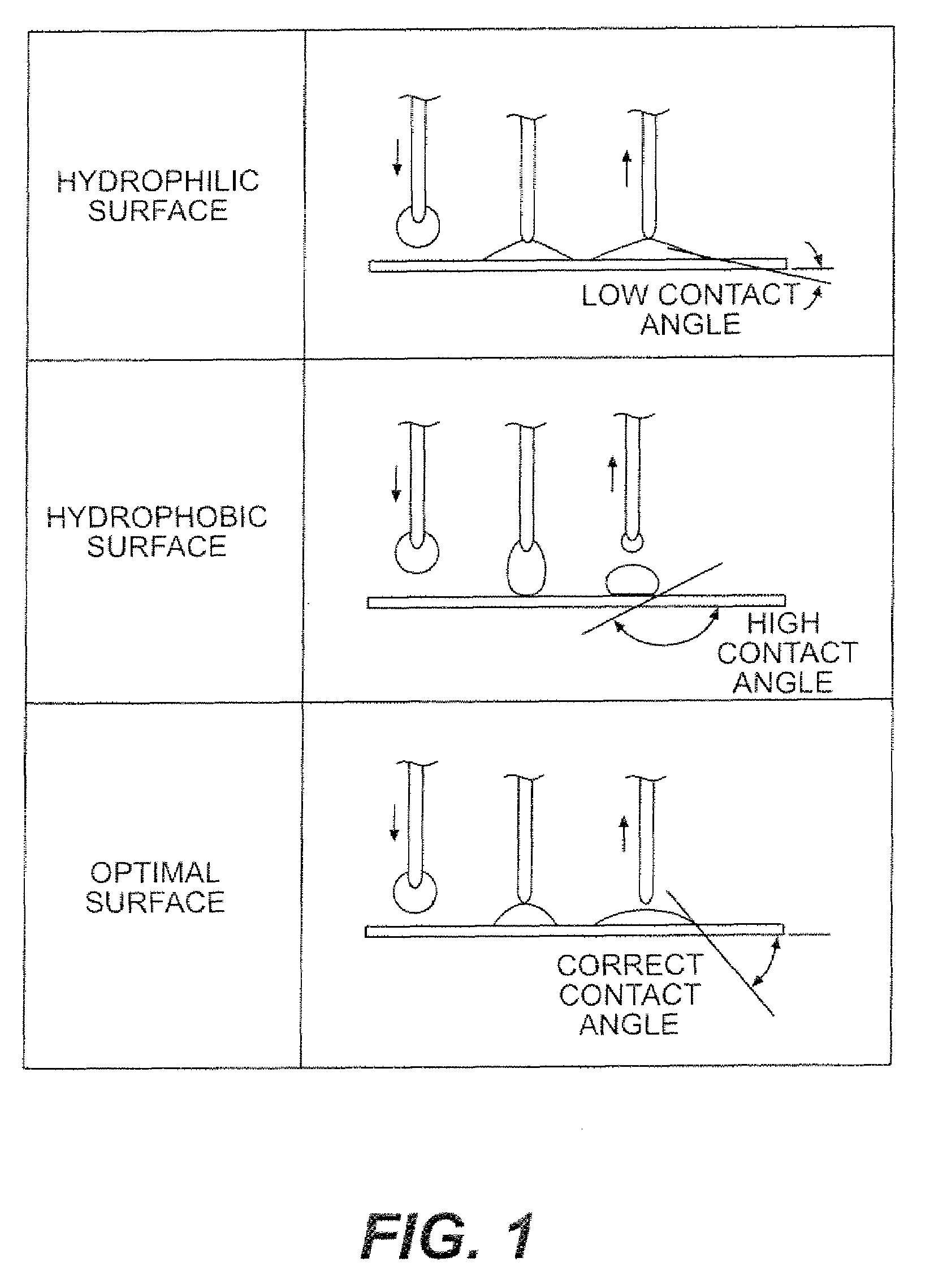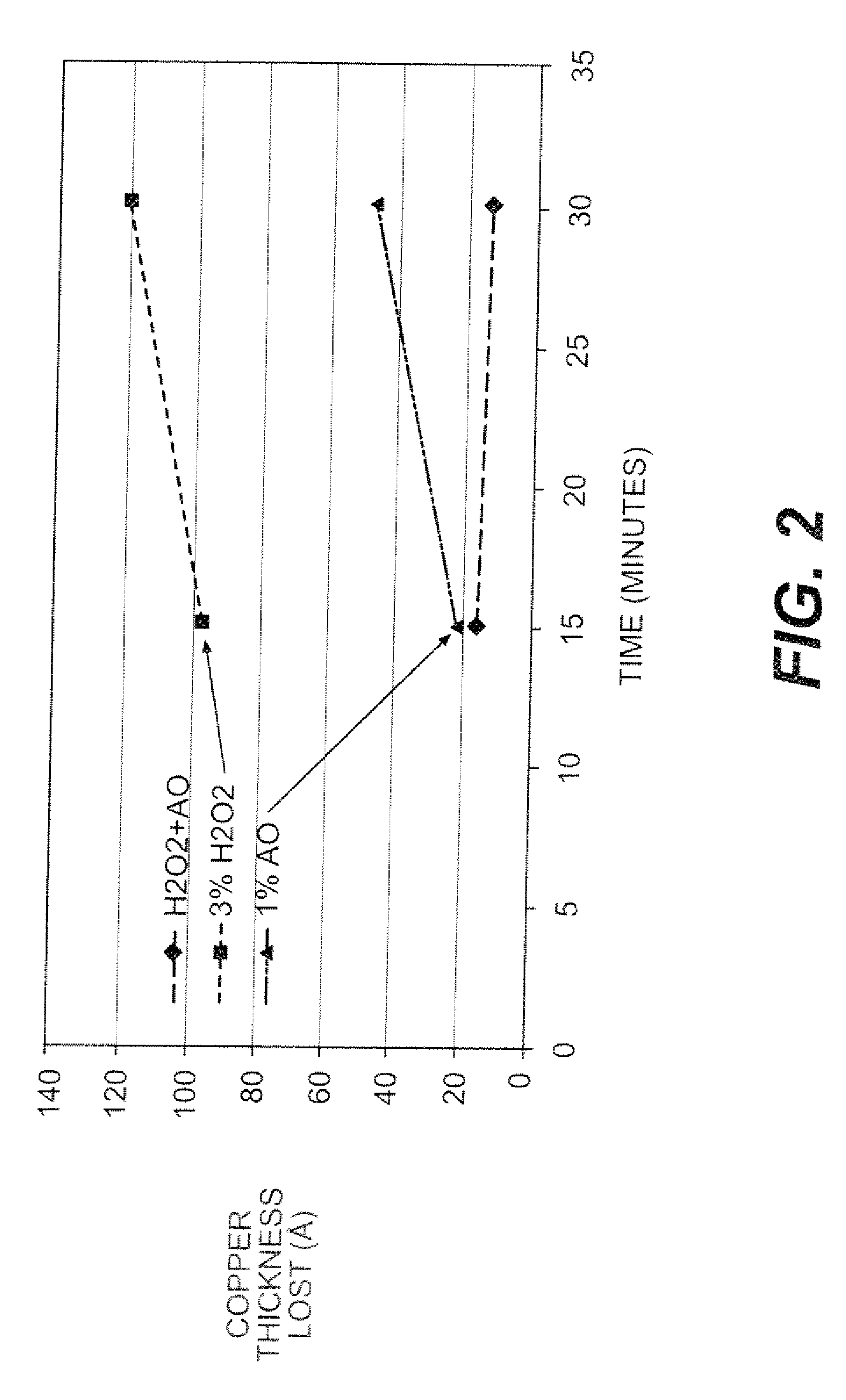Methods of post chemical mechanical polishing and wafer cleaning using amidoxime compositions
- Summary
- Abstract
- Description
- Claims
- Application Information
AI Technical Summary
Benefits of technology
Problems solved by technology
Method used
Image
Examples
examples of embodiments
OF THE PRESENT INVENTION
[0363]Note that all patents cited in the examples are incorporated herein by reference regarding the proportions, amounts and support for the compositions and methods described in the examples.
example 1
[0364]The patents referred to in the examples herein and elsewhere in the description and summary are each hereby incorporated by reference in their entirety. One embodiment involves a method for removing organometallic and organosilicate residues remaining after a dry etch process from semiconductor substrates. The substrate is exposed to a conditioning solution of phosphoric acid, hydrofluoric acid, and a carboxylic acid, such as acetic acid, which removes the remaining dry etch residues while minimizing removal of material from desired substrate features. The approximate proportions of the conditioning solution are typically 80 to 95 percent by weight amidoxime compound and acetic acid, 1 to 15 percent by weight phosphoric acid, and 0.01 to 5.0 percent by weight hydrofluoric acid. See, U.S. Pat. No. 7,261,835.
[0365]Another embodiment includes from about 0.5% to about 24% by weight of complexing agents with amidoxime functional groups with an method having a pH between about 1.5 a...
example 2
[0366]Table 1 lists other embodiments of the present invention where the formulations additionally include from about 0.5% to about 24% by weight of compounds with amidoxime functional groups in methods. Such formulations may contain additional components consistent with this application such as surfactants, alkaline components, and organic solvents.
TABLE 1Examples of Useful Formulations with Chelating Agents for Use withAmidoxime Compounds of the Present InventionH3PO4 (wt %)Other Acidwt %2methanesulfonic1.472pyrophosphoric acid (PPA)3.02Fluorosicilic0.242Oxalic2.04Oxalic2.06Glycolic1.03Oxalic2.03Lactic2.04Lactic2.03Citric2.04Citric2.03PPA0.53Glycolic2.06Glycolic2.03PPA2.03PPA4.0
PUM
| Property | Measurement | Unit |
|---|---|---|
| Fraction | aaaaa | aaaaa |
| Fraction | aaaaa | aaaaa |
| Fraction | aaaaa | aaaaa |
Abstract
Description
Claims
Application Information
 Login to View More
Login to View More - R&D
- Intellectual Property
- Life Sciences
- Materials
- Tech Scout
- Unparalleled Data Quality
- Higher Quality Content
- 60% Fewer Hallucinations
Browse by: Latest US Patents, China's latest patents, Technical Efficacy Thesaurus, Application Domain, Technology Topic, Popular Technical Reports.
© 2025 PatSnap. All rights reserved.Legal|Privacy policy|Modern Slavery Act Transparency Statement|Sitemap|About US| Contact US: help@patsnap.com



